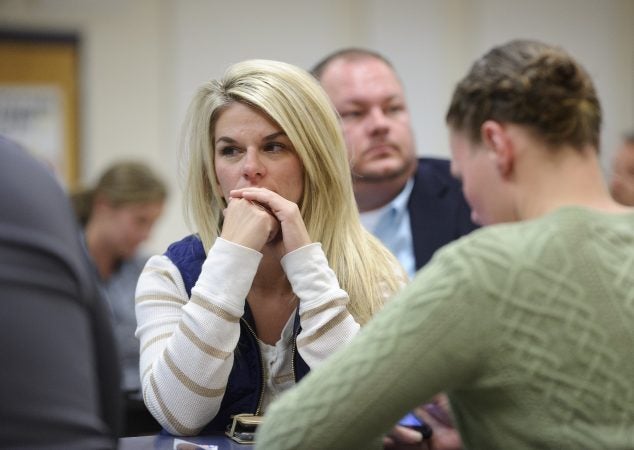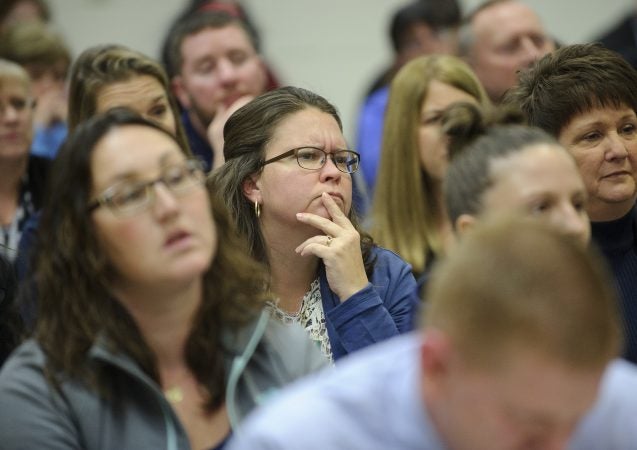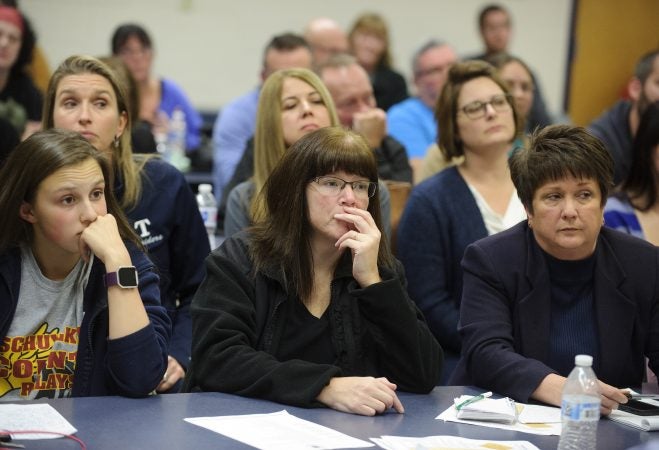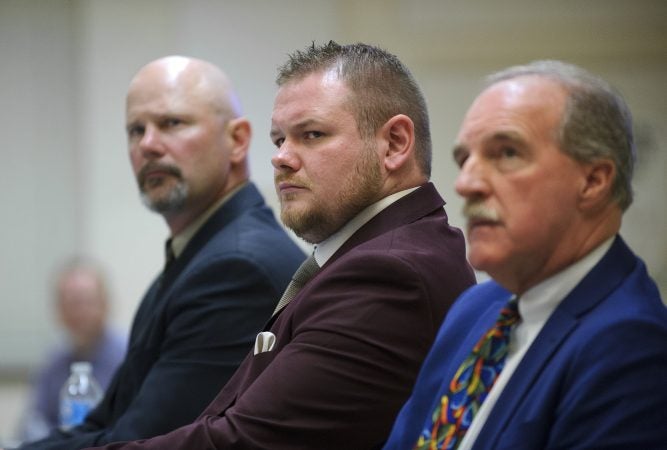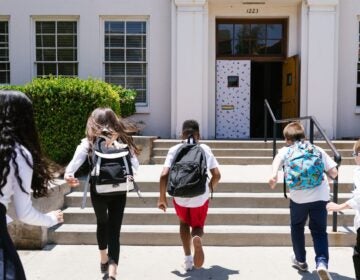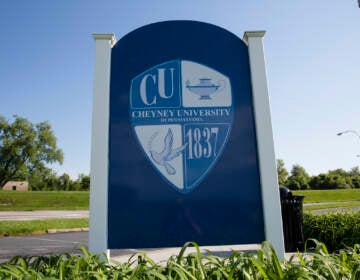In Pa. coal country, debate flares over arming teachers to prevent school shootings
Listen 5:32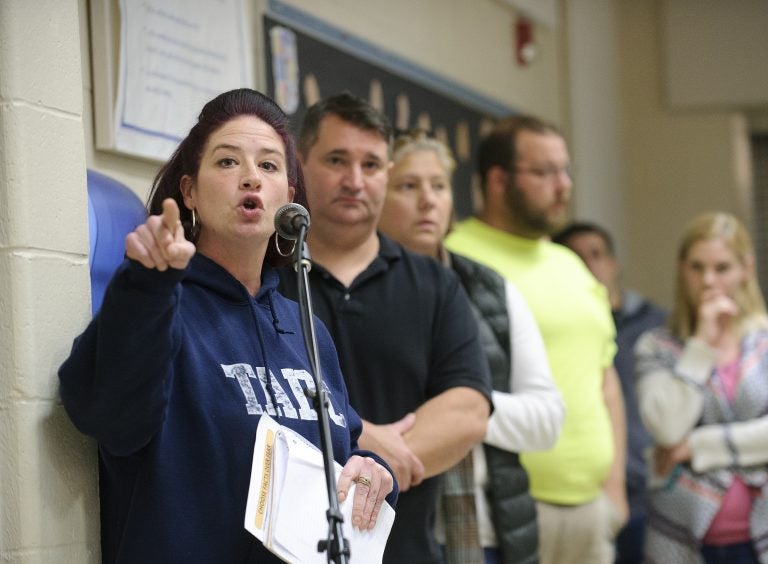
Tamaqua parent Rebecca Kowalski supports the school board's new policy that would authorize the training and arming of some teachers and staff. (Matt Smith for Keystone Crossroads)
Nearly three hours into a special meeting about a policy that would ask some staff at the Tamaqua Area School District to carry guns, parent Liz Pinkey read aloud a letter from educators at Sandy Hook Elementary School.
They had written to the Pennsylvania State Senate last year, when lawmakers were debating a bill to allow personnel with concealed carry permits to be armed on school property.
“We would like to make something clear,” the teachers wrote, “we would not have wanted that option, nor would it have made us or our students safer. In fact, it might have made things even worse.” They signed it, “the surviving educators of the Sandy Hook school massacre.”
When Pinkey finished reading, Tamaqua School Board President Larry Wittig replied, referring to the Sandy Hook educators who did not survive, “I would add to that, if we could speak to the six adults who are no longer here, they may have a different opinion.”
A shocked groan went up from the crowd of over 150 parents and residents who had gathered in a middle school cafeteria last week to hear perspectives for and against arming staff. It’s become a controversial issue in this small Schuylkill County town in Northeastern Pennsylvania’s coal region, where guns are commonplace but opinions are divided on their role in schools.
“Guns are a part of the culture here. We have off the first day of buck hunting season — from school, from work, from everything,” said Pinkey, a parent to three children in the school district, in an interview. “We’re not against guns. My husband is very pro-gun, very N.R.A., and even he said these are just not the right hands to be putting weapons into.”
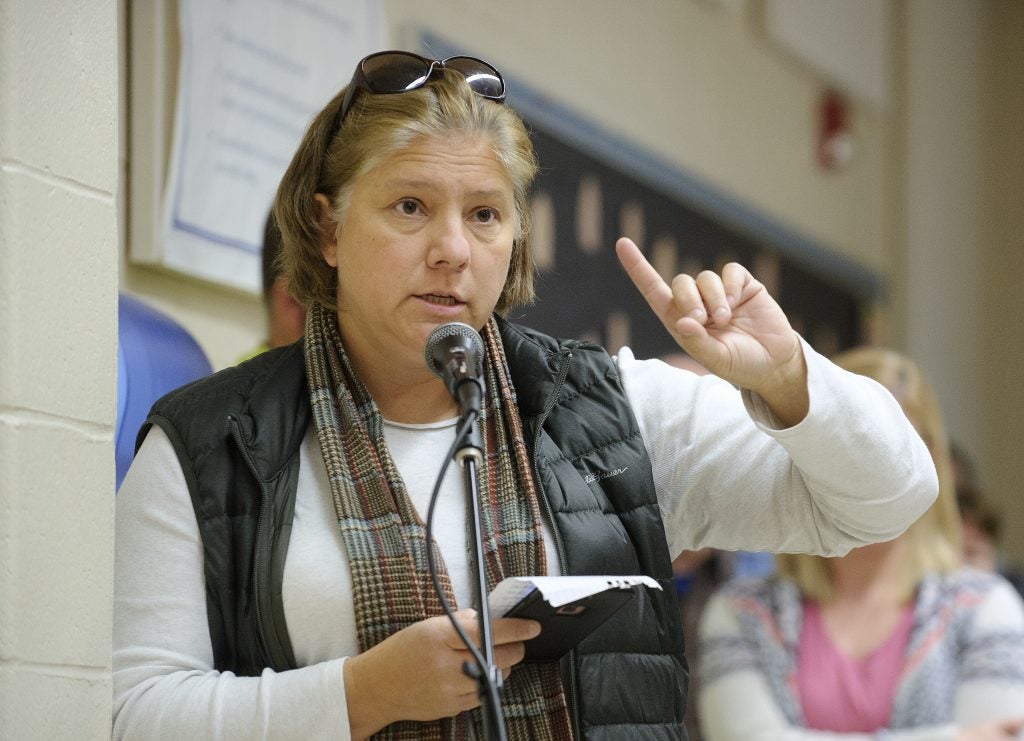
In September, Tamaqua’s school board unanimously approved a policy change that would recruit staff to anonymously carry firearms in the district’s four schools after completing a three-and-a-half day training. If the policy is enacted, the district would be the first in the state to have armed teachers in classrooms.
But until this meeting, there had been little formal public discussion about it, and the room was tense. Tamaqua High graduate Julian Gerace had driven all the way back to his hometown from his job in Philadelphia just to be at this meeting, “because this works me up so much,” he said.
Sophomores Paige Pratt and Madelyn Jones, who were also preparing to speak against the policy, said they’d been getting teased by classmates at school all week, called “snowflakes” and “stupid liberals.” When the meeting began, it was standing room only.
Board member Nicholas Boyle, who has been a force behind the policy, said it had been discussed at previous board meetings, but Wittig, who resigned his post as chairman of the Pa. Board of Education earlier this year due to allegations of sexual misconduct dating back to the 1980s, acknowledged that they hadn’t informed teachers before voting.
When the news initially surfaced, many Tamaqua educators and parents were caught off guard.
“I’m a teacher here and I learned about it in the newspaper,” said Kim Woodward, who doesn’t support the policy, as a teacher or a parent.
“My other daughter who’s in 6th grade here, if her teacher would the one that is armed, and he is going after the active shooter, her classroom therefore becomes alone, and then it’s putting her at risk,” she said.
Questions like this came up again and again at the meeting: would armed teachers leave their classrooms, and their students, to pursue a shooter? If a teacher accidentally injured an innocent person while trying to stop a shooting, would the school board defend them?
These and other specific questions about the policy remain unanswered.
Boyle has said that he would like to sign up 20 to 30 staff — teachers or administrators — who would carry anonymously on a rotation, so that about three staff members per school building would be armed at any given time. They would undergo training from the Buckeye Firearm Foundation, a nonprofit that has trained over 2,000 teachers to carry arms in Ohio and Colorado.
“The idea of this is random-carry, multiple people carrying, as a deterrent that prevents cowards from targeting these places,” said Boyle. He says this will cut response time, as armed staff will be in the building long before law enforcement can arrive.

At least 10 states already allow concealed carry permit holders to have guns in schools, and hundreds of school districts across the country have staff carrying firearms.
Last year, the Pennsylvania Senate passed a bill, S.B.383, which would have allowed concealed carry permit holders to be armed in schools, but the bill died in the House. Without such legislation, the legality of Tamaqua’s policy is far from settled, according to spokespeople for Senate Republicans and House Democrats.
Section 912 of the Pa. Crimes Code prohibits the possession of a weapon at school, which includes a “firearm, shotgun or rifle.” That section allows for a defense if that weapon is used with a “lawful purpose,” but that phrase is undefined.
Republican state Senator Donald White, who authored SB383, has argued that defending children is a lawful purpose, but the state Department of Education considers the scope of the law “unclear and unsettled.”
While President Trump and the National Rifle Association have supported arming teachers, the policy has little support among health or education professionals.
Pennsylvania’s largest teachers union, the Pennsylvania State Education Association, plans to file an injunction Wednesday in an attempt to stop Tamaqua’s policy.
“Most teachers are not for other teachers carrying firearms,” said Frank Wenzel, Tamaqua’s district union representative. “Being that these people are not trained for this, this is not what we signed up for, brings a lot of concern.”
Teacher training
The Buckeye Firearm Foundation’s program, FASTER, is centered around the idea that the longer it takes to respond to a school shooting, the more people die. Tamaqua’s school board invited Joe Eaton, a representative from Buckeye, to speak at the meeting.
“Time is what matters in these situations,” he said. “Every single minute that you allow violence to continue in your school, on average five to seven additional dead or injured is what you’re going to see.”
Eaton estimates the training costs approximately $1,500 per person. The board also separately passed a measure that would provide a $2,000 yearly stipend and $250,000 in insurance to staff who sign up.
At the meeting, some parents wondered why the board wasn’t considering hiring armed guards to secure the school instead. The group opposed to the policy, Tamaqua Citizens for Safe Schools, presented their estimates for how much it would cost.
Boyle said he would do both if the school district could afford it, but says his idea would be more potent and cost effective.
“There is no price on a child’s life, and we get that, but in reality everything runs on a budget,” he said. “So, yes, can we hire a police force for Tamaqua, absolutely. We’ll kill band, we’ll kill the football team, we’ll kill all these after school activities… if that’s what they want.”
Preventative measures
Parents at the meeting also called for the board to consider preventative safety initiatives that begin long before an active shooter situation. These included better social and emotional support for at-risk students, emergency response cell phone apps and security systems that could send silent alerts and help police track a shooter, and more restrictive screening of people entering the building. Tamaqua already owns several metal detectors, but they are not currently in use.
Attorney Cheryl Tennant-Humes, who grew up in Tamaqua and has a grandson in the district, helped organize the group of parents against the board’s plans.
“We have not found one study, not one expert that recommends arming teachers and staff. In fact, we found the contrary,” she said at the meeting. “The board dropped this atomic bomb of a policy on the district with little to no transparency, no explanation of the process, no input from the public and has given no reason we should follow them into uncharted legal territory.”
Some Tamaqua parents support the board, like Jessica Tirpak, who has three children in the district.
“I am for guns in the schools, 100 percent. I want to see teachers carry,” she said. “It’s sad that that’s where we’re at, but it’s part of the times we live in, so I’ve accepted that.”
Earlier this year, after the shooting in Parkland, Florida, her son asked her about it. “His words were, ‘How could you send me to school, knowing that this could happen?’ So that was a tough pill to swallow,” she said.
By the end of the marathon meeting, however, the large majority of speakers disagreed.
“I know as a student I wouldn’t feel safe knowing my teacher had a gun, and I feel like I would be too focused on that,” said Paige Pratt, 16, one of two students who spoke out against the policy. “There are enough distractions in the classroom as it is, and wondering whether teachers have guns shouldn’t be one of them.”
Pinkey agreed. She’d support armed guards, just not armed teachers.
“We have to be rational and intelligent about this. For every school shooting there is, there were millions of kids that went to school that day and came home safely,” she said.
Later that night, hours after the meeting ended, a shooter entered a night club in Thousand Oaks, California and killed 12 people, starting with the armed security guard at the door. To Boyle, it was evidence that guards only become targets. To the mothers of Tamaqua Citizens for Safe Schools, more evidence that more guns don’t lead to fewer deaths.
For both, it was a grim reminder that as rare as these events are, they can — and do — happen everywhere in America despite our best defenses.
WHYY is your source for fact-based, in-depth journalism and information. As a nonprofit organization, we rely on financial support from readers like you. Please give today.



